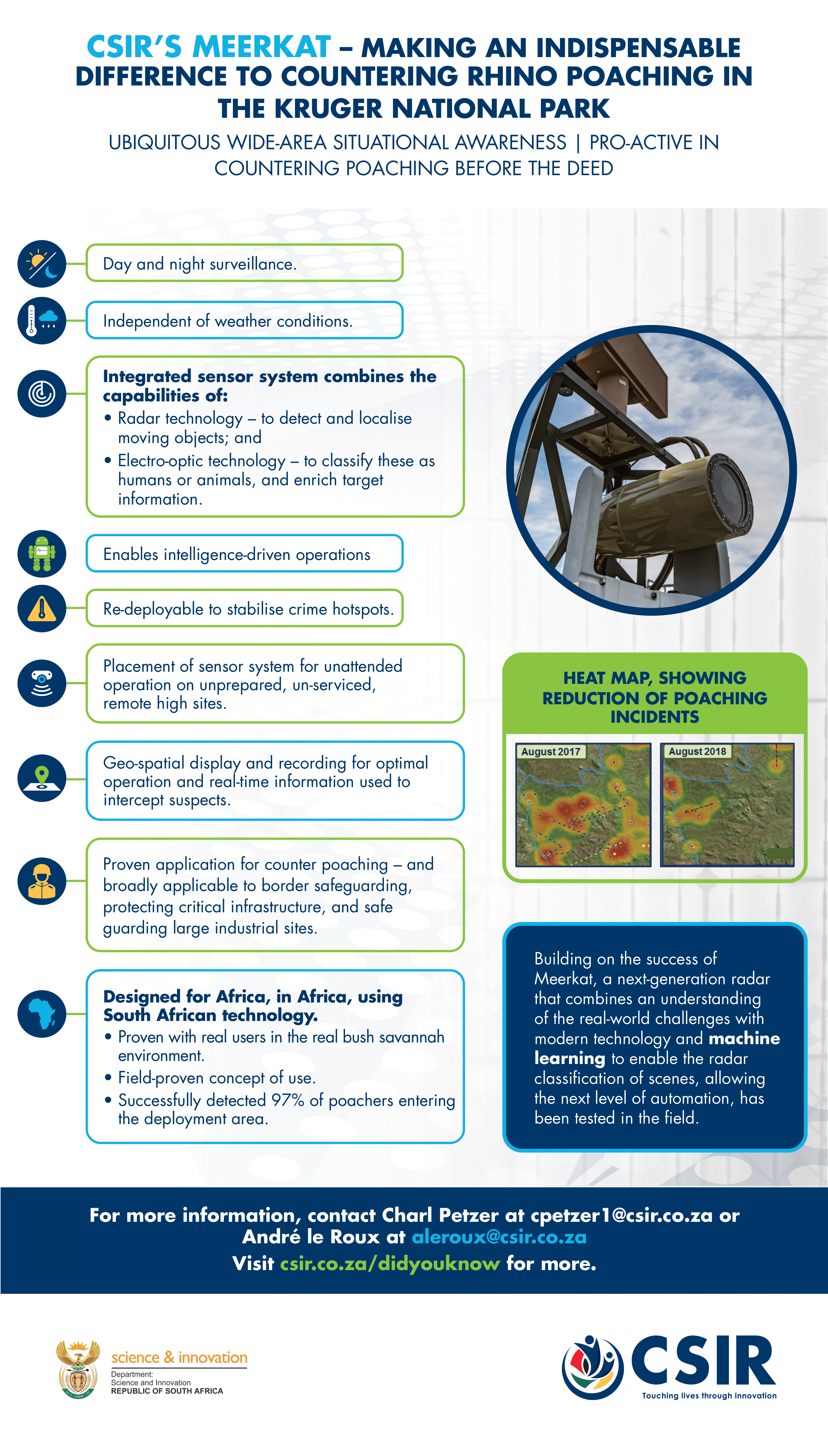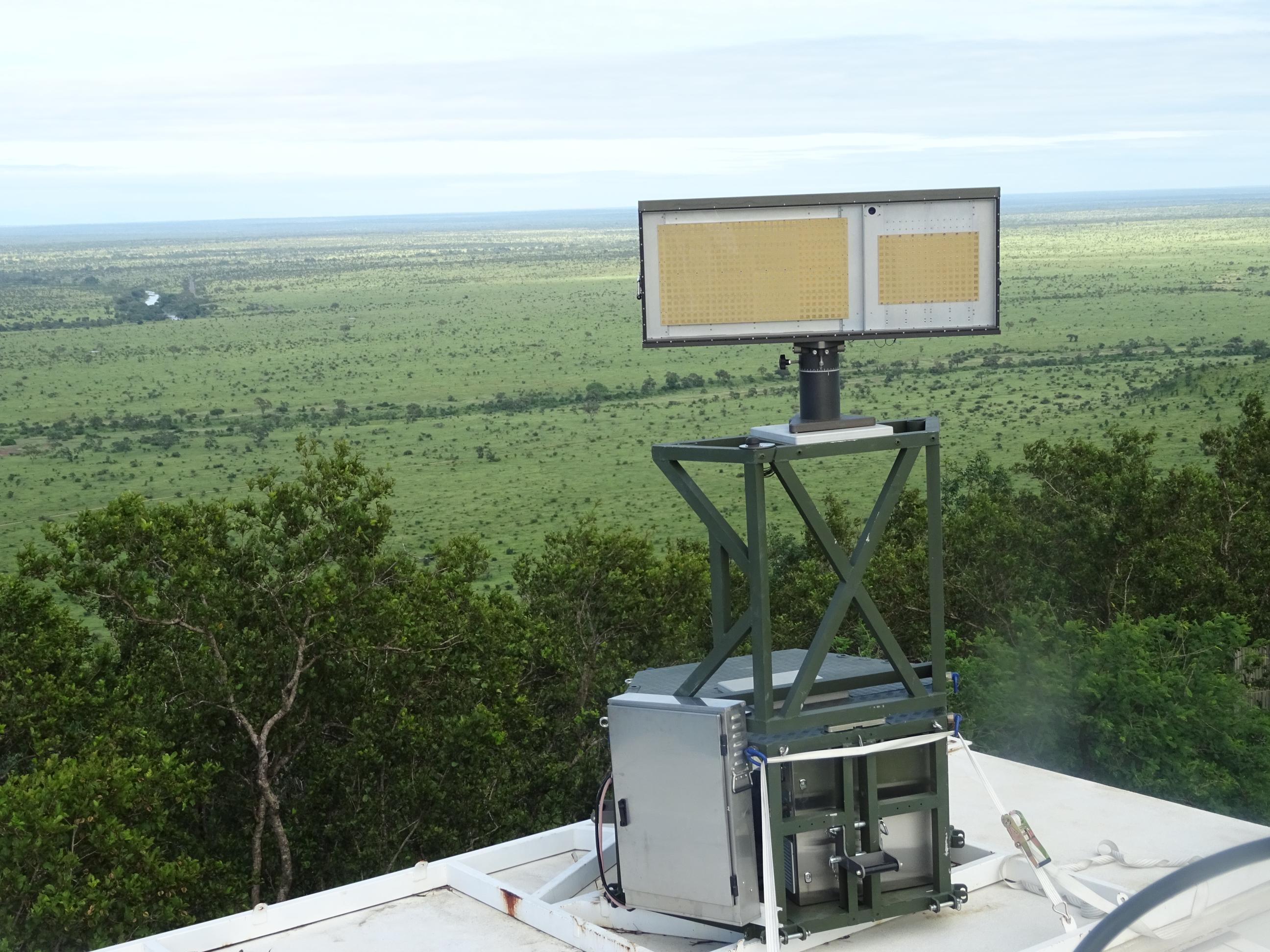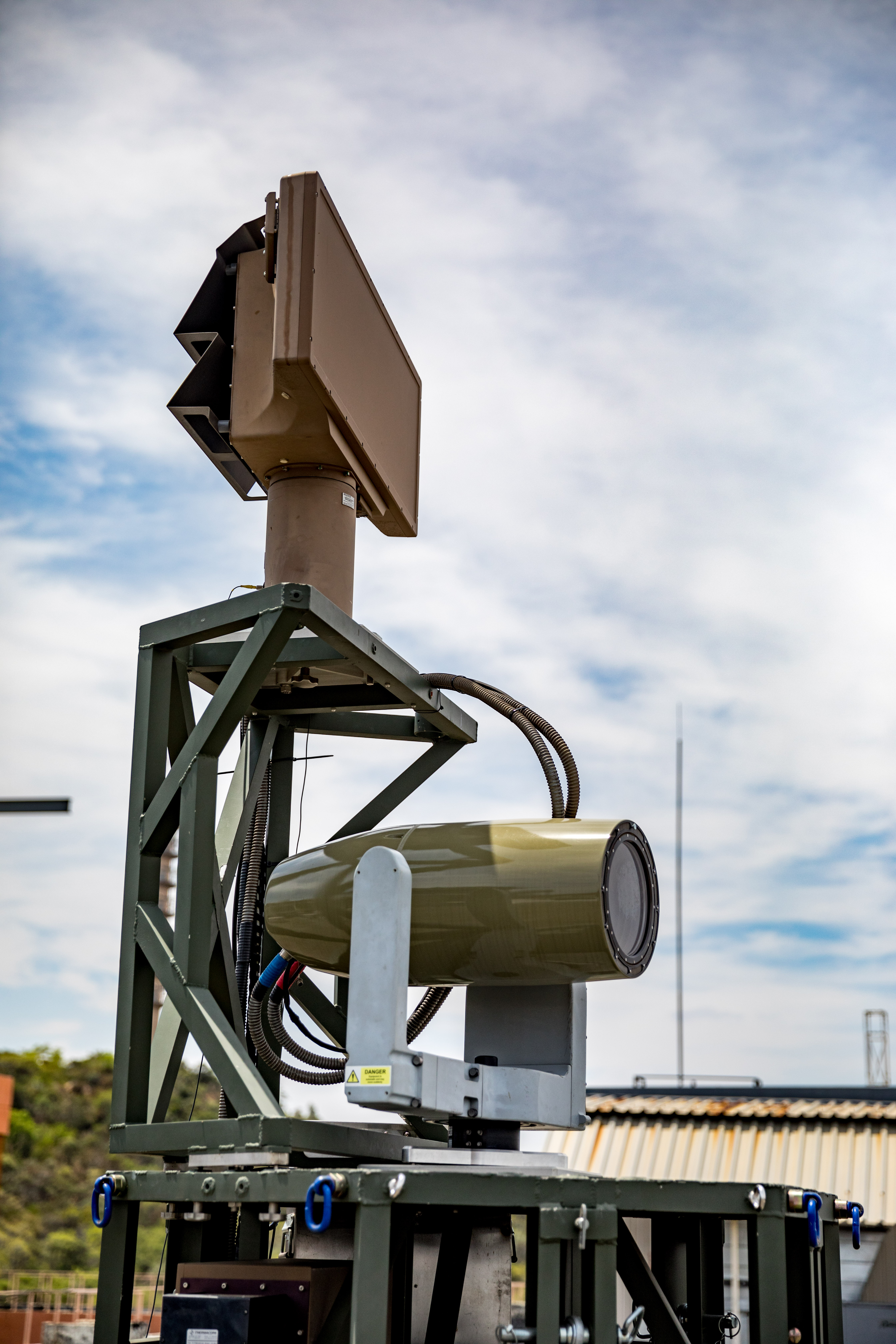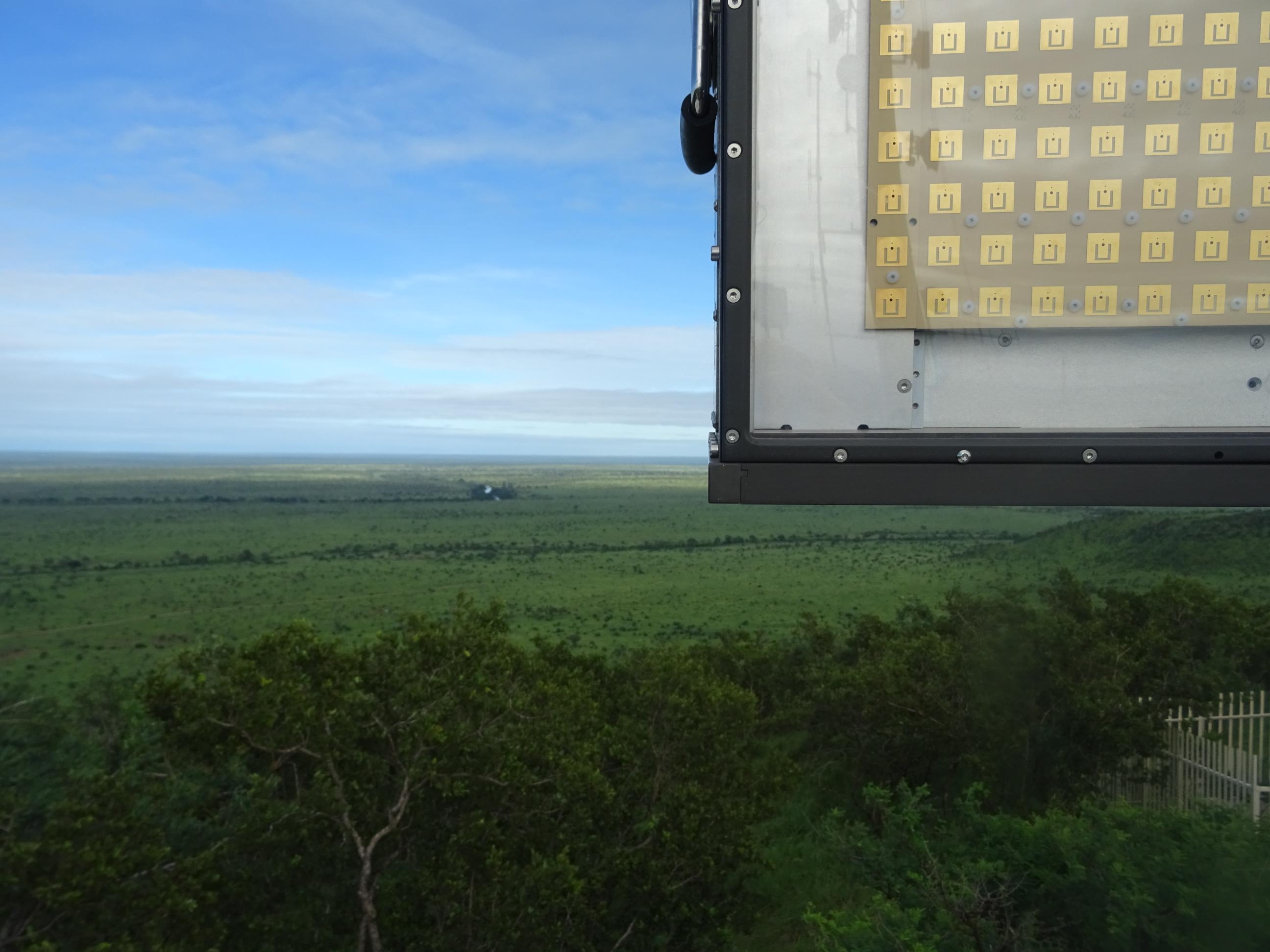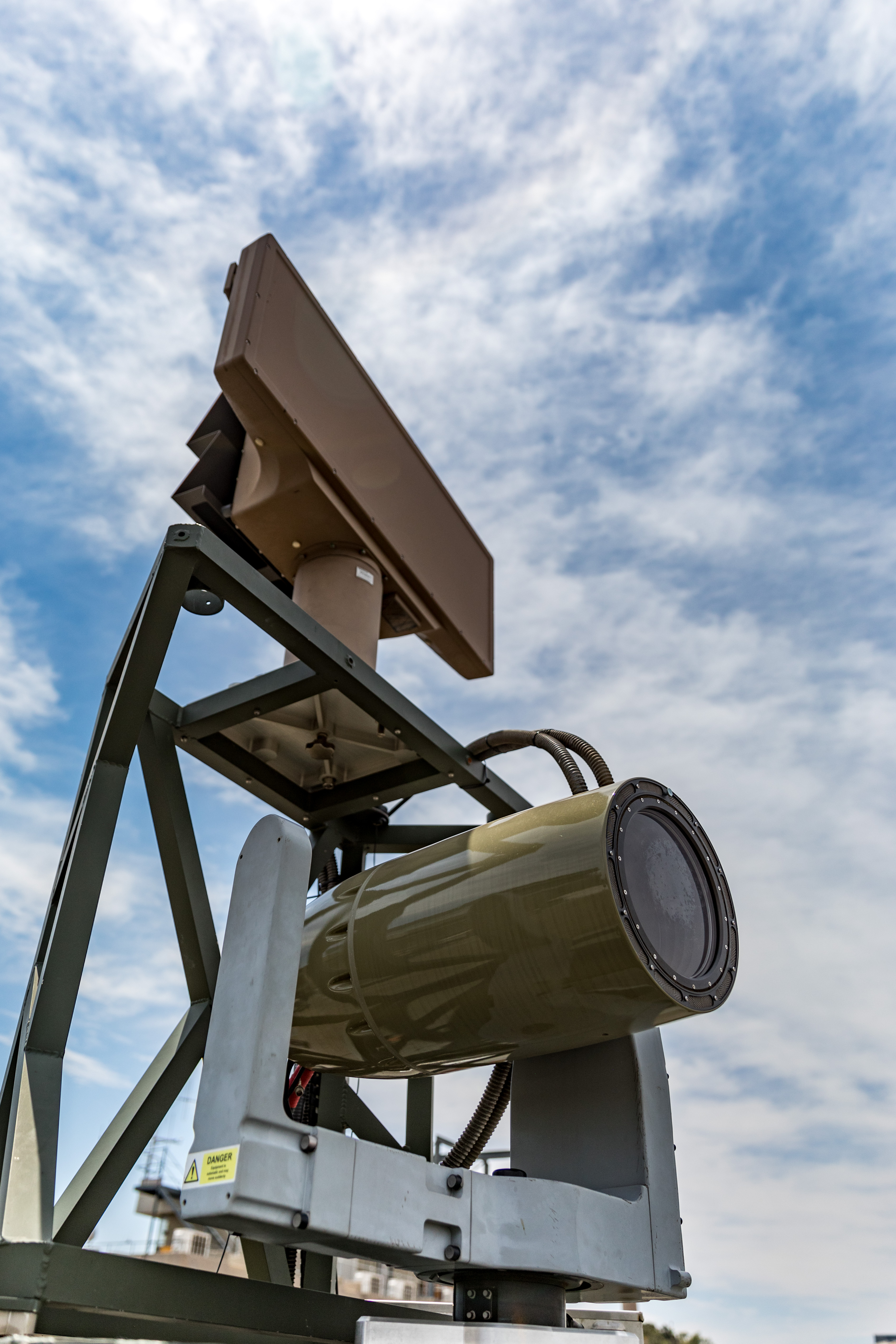Advanced Search
Search Results
The Mandela Mining Precinct (MMP) today displayed two lighter, significantly faster, quieter and more energy-efficient rock drills at its premises in Johannesburg, showcasing new technology that could offer safety in South African mines.
The drills were manufactured by two local original equipment manufacturers (OEMs), Hydro Power Equipment (HPE) and Novatek, as part of the MMP's industry innovation challenge, the Isidingo Drill Design Challenge.
Meerkat wide-area surveillance systems
CSIR-developed surveillance radar upgrades the fight against poaching
The Meerkat Wide Area Surveillance System (WASS) was developed by the CSIR to support SANParks in its fight against rhino poaching. Despite unforgiving weather conditions, the system – which was deployed for the first time in the Kruger National Park – is successfully utilised to detect and classify people and animals over a wide area, and has had well-documented successes in curbing rhino poaching incidents through wide-area surveillance. The WASS is funded by SANParks and the Peace Parks Foundation, in partnership with the United Kingdom Post Code Lottery.
The Meerkat WASS uses a Reutech Radar Systems ground surveillance radar sensor to detect and localise the movements of suspicious objects, and a CSIR-developed electro-optic day and night sensor to classify these as either a human or an animal. The sensor system can be remotely deployed on an unprepared site to optimise sensor placement. Informaton regarding the suspicious object is displayed in a control room on a geo-referenced electronic map, providing actionable intelligence to facilitate the co-ordination of counter-poaching operations.
“From the lessons learned through the successful operational deployment and optimisation of the Meerkat system, it became obvious that automating the functions in the Meerkat system would have a marked effect on the operations in an application that requires 24/7 wide area surveillance,” explains Charl Petzer, CSIR Programme Manager: Integrated Security, adding that this would reduce the large burden on an organisation’s operational costs brought about by relying on operators to perform the classification of humans from animals.
Upgrading the Meerkat WASS
With support from the Department of Science and Innovation, the CSIR has developed the Ground-based Surveillance and Classification Radar (GSCR), utilising several leading-edge technologies that have evolved across multiple projects within the CSIR’s radar area, a technological upgrade to the Meerkat WASS.
The GSCR system has the same benefits traditionally associated with utilising radar for detection, namely coverage over extremely long ranges, as well as all-weather, and day and night operation.
In addition, the CSIR-designed and built electronically-steered antenna technology employed increases the sensitivy, making it even more difficult for the poachers to hide. This array technology, along with the strong base that the CSIR has built up over the past two decades in artificial intelligence techniques to classify radar detections directly from the radar return, has been used to design a radar where classification is intrinsically included in the radar design. This enables merging of the radar detection and radar-based classification functions to provide a true recognised area picture, with or without the intervention of an operator. Utilisation of the system places rich and up-to-date information in the hands of decision-makers to enable appropriate responses to situations developing on the ground.
“The CSIR has also invested in expanding and optimising the electro-optical system to match different scenarios. A smaller and more power-efficient day and night camera, called Rino, and a fully integrated passive camera for shorter ranges, known as Tyto, have been added to our range of sensors”, says Petzer.
The Rino camera has been designed as a fully sealed, low maintenance system with locally developed image processing capabilities for reduced data rates and can be remotely deployed for extended periods of time. It has shown that it can operate with great success in the extremely harsh lowveld conditions without frequent attention. It operates passively in daylight, through dusk and down to halfmoon conditions, and is augmented with a long-range laser illuminator for zero-light conditions. Advancements such as the use of range and elevation data, movement detection, range-dependent focus and a powerful illumination system, make it a formidable observation system.
The Tyto system is aimed at slightly shorter range surveillance, with a high-sensitivity, high-dynamic range primary channel, a full HD colour viewfinder for situational awareness, and an uncooled thermal band channel for passive night viewing and sensor fusion. As a self-contained cooled, visible band system with onboard processing, geolocation and a thermal management outer shell, its performance is similar to that of the Rino, with the added benefit of a drastic reduction in mass. The Tyto system slots into the larger Meerkat system seamlessly, adding more flexibility to the system.
This new technlogy increases the arsenal of sensors to be applied in various scenarios and for various WASS applications. The technology and concepts of use tested in the wildlife domain can now be adapted to applications such as critical infrastructure protection, border safeguarding, maritime surveillance and safeguarding of rural and agricultural environments.
Related Information
The Gauteng Department of Roads and Transport (GDRT) and the Council for Scientific and Industrial Research (CSIR) are executing a supplementary household travel survey to study the change in trave
The CSIR’s spatial information systems research group provides thought leadership and innovative spatial information system solutions in real-world settings to support decision-making.
Research has shown that unique African genetic variants in hepatic metabolism genes alter the efficiency of drug metabolism and, thus, drug response.
Personalised services and cross-platform voice user interfaces are becoming an industry norm.
The cloud and network architecture and services research group focuses on research and development in the cloud, network architecture and services area.
The focus of the CSIR’s work in spectrum access and management innovation is on dynamic spectrum resource management and access, particularly developing the know-how and technologies that enable ef
Biophotonics investigates the development and application of optical or photonics-based techniques to facilitate single molecule and/or cell studies.
The CSIR has developed a custom metal injection moulding technology platform that can undertake cost-effective mass production of complex near-net-shaped components from fine titanium powder and re



